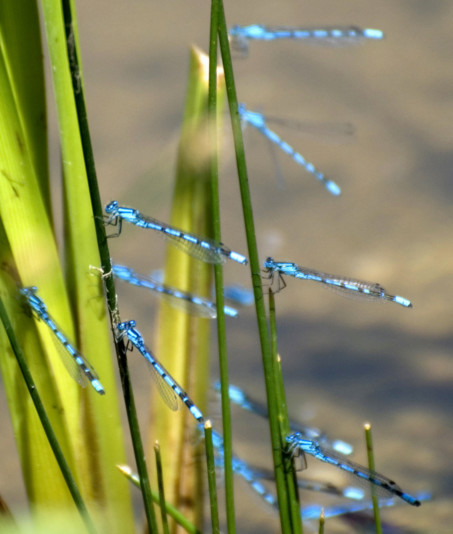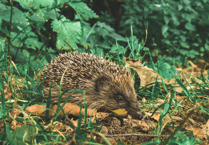The Manx Wildlife Trust is the leading conservation charity on the Isle of Man, protecting the fragile ecosystem by creating thriving landscapes, living seas and fostering a society where nature matters
In this year’s Manx Wildlife Trust articles, we are recognising that small stuff counts, and our invertebrates especially are at the very heart of our ecosystems.
Without them important jobs like aerating soil, pollinating blossom, and controlling plant pests wouldn’t happen.
The world of invertebrates can be very strange and throughout their lifecycle they can take on completely different forms.
This month looks at damselflies and dragonflies, which change from living underwater as larval forms before becoming terrestrial adults.
So what’s the difference between a damselfly and a dragonfly?
Dragonflies are larger, stronger fliers, their eyes touch together and at rest they hold their wings out sideways from their body.
They are incredibly efficient hunters of other smaller flying insects, with 90% of their hunts being successful.
A massive 85% of their brains is dedicated to vision and with their large wrap around compound eyes you can see why this is so.
Damselflies, however are smaller with a fluttery flight, a gap between their eyes and at rest hold their wings above their bodies.
On the Isle of Man we have 12 different resident species of these fascinating creatures.
It is their strange life cycle that is particularly fascinating, and they spend most of their life underwater before transforming into the elegant flying adults.
Both dragonflies and damselflies start off as eggs.
Chaser, skimmers and darter dragonflies lay their eggs under the water surface in jelly like masses.
You can often see dragonflies dipping their tails in the water and this is when they are laying their eggs.
You will also see male dragonflies and damselflies fiercely guarding the female they had mated with, often flying in tandem.
In the case of damselflies and hawker dragonflies the female has a scythe shaped end to her body which is used to cut into plants and the egg inserted into the stem or even in rotting wood.
When the larva or nymphs hatch out of the eggs, they have six legs and tiny wing buds on their backs.
Dragonflies can remain at this larval stage from between two months and five years, depending on the species.
The larvae have voracious appetites, catching tadpoles, worms, insects and even small fish by shooting out an extending jaw.
Finally, after several moults of their exoskeletons they emerge out of the water, to become adults and, if you look closely at the vegetation around ponds, you might be lucky enough to find one of these shedded skins, called exuvia.
Adult dragonflies may only live for a few weeks, depending on the species.
You can start looking for dragon and damselflies from the end of April to late September.
Many of the island’s plantations have ponds which are good places to start looking, and the Ballaugh curraghs often has damselflies near to the footpaths.
Threats to these beautiful insects include pollution of the water, loss of habitat, invasive pond plants such as crassula helmsii and a lack of plants for the larva to climb up and emerge from.
Please do be aware when walking your dog and try and keep them away from the pond edges so the plants aren’t trampled.
Also, try not to let your dog jump in the ponds, as the splashes can wash off and kill emerging dragon and damselflies.
If you would like to know more about dragonflies, you can have a look at the informative Facebook page ’Manx Dragonflies & Damselflies’.
You can also join the Invertebrate group on a field trip to look for these insects.
More details on how to find out more on the island’s invertebrates , or just how to get involved can be found on the Manx Wildlife Trust social media pages, by contacting our office in Peel on 844432, or by visiting www.mwt.im.





Comments
This article has no comments yet. Be the first to leave a comment.